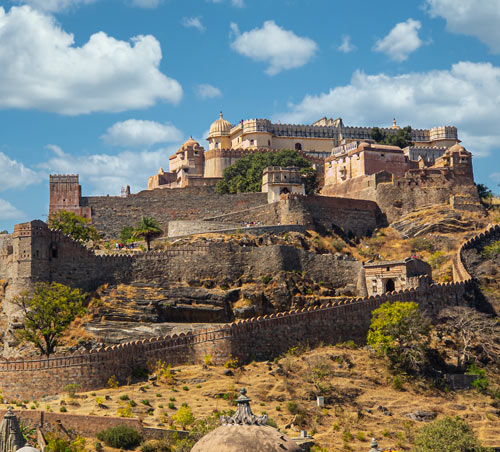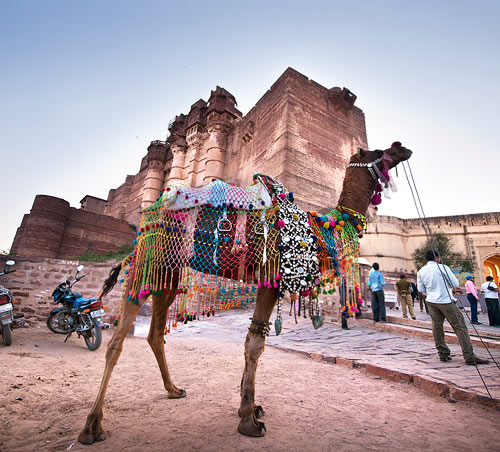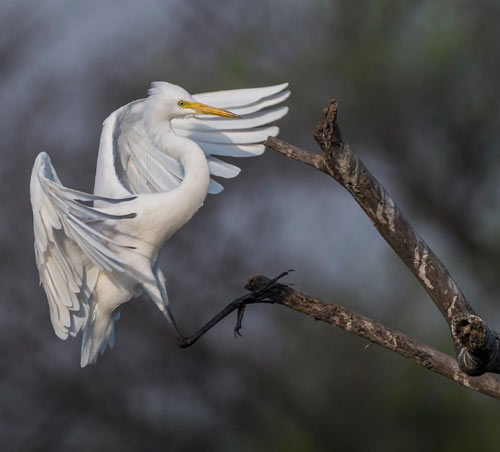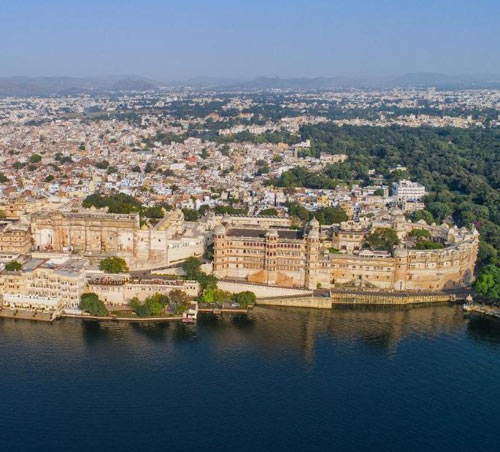Duration: 09 Nights / 10 Days
Destinations: Delhi – Sariska – Jaipur – Ranthambhore – Bharatpur – Fatehpur Sikri – Agra – Delhi
Tour Overview
This 10-day tour package offers an immersive experience combining India’s rich cultural history with the stunning wildlife of Rajasthan. Explore the fascinating cities of Delhi, Jaipur, and Agra, visit UNESCO World Heritage Sites like the Taj Mahal and Fatehpur Sikri, and venture deep into nature at Sariska and Ranthambhore National Parks. In addition, enjoy bird-watching at Bharatpur’s Keoladeo National Park, home to thousands of migratory birds. This journey gives you a perfect balance between cultural heritage and nature’s marvels.
Tour Highlights:
- Delhi: Explore the Qutub Minar, India Gate, and Red Fort.
- Sariska: Jeep safari through Sariska National Park to spot tigers and leopards.
- Jaipur: Visit Amber Fort, City Palace, and enjoy an elephant ride.
- Ranthambhore: Wildlife safari through India’s famed tiger reserve.
- Bharatpur: Bird-watching at Keoladeo National Park.
- Agra: Witness the majestic Taj Mahal and Agra Fort.
Detailed Tour Itinerary
Day 1: Arrival in Delhi : Welcome to India! Upon your arrival at New Delhi Airport, you will be greeted by our tour representative and transferred to your hotel. After check-in, take time to relax and recover from your journey. You can explore the vibrant city atmosphere at your leisure in the evening or simply rest to prepare for the adventures ahead.
Overnight Stay: Hotel in Delhi
Day 2: Delhi Sightseeing : Start your day with a hearty breakfast before setting off to explore both the historical and modern sides of Delhi. Begin with a tour of New Delhi, visiting landmarks like the Qutub Minar, a stunning 11th-century tower, and the India Gate, a grand war memorial. Drive past the grand Rashtrapati Bhavan (President’s House) and Parliament House.
Next, dive into the charm of Old Delhi, where you’ll visit the iconic Red Fort, a UNESCO World Heritage Site, and pay your respects at the Raj Ghat, the memorial of Mahatma Gandhi. Wrap up your tour with a visit to the Laxmi Narayan Temple (Birla Temple), a beautiful Hindu shrine.
Overnight Stay: Hotel in Delhi
Day 3: Delhi to Sariska (200 km / 4 hours) : After breakfast, embark on a scenic drive to Sariska Tiger Reserve nestled amidst the Aravalli Hills. Upon arrival, check into your hotel and take some time to relax. In the afternoon, enjoy an exciting Jeep Safari through the Sariska National Park, where you might encounter tigers, leopards, and various other wildlife species.
Overnight Stay: Hotel/Resort in Sariska
Day 4: Sariska to Jaipur (120 km / 3 hours) : Post breakfast, you will head toward Jaipur, the capital city of Rajasthan, known as the Pink City. Upon arrival, check into your hotel. Start your Jaipur adventure with a visit to the Hawa Mahal (Palace of Winds), a five-story architectural wonder. Then, explore the bustling Johari Bazaar, famous for its traditional jewelry and crafts. End your day with a visit to the grand City Palace and Jantar Mantar, an ancient observatory.
Overnight Stay: Hotel in Jaipur
Day 5: Jaipur Sightseeing : Begin your day with a visit to the majestic Amber Fort located atop a hill. You can choose to ride an elephant up the fort’s ramparts or drive up for a panoramic view of Maota Lake below. Later, explore Jaigarh Fort and Nahargarh Fort, both offering spectacular views of the city. Visit the Laxmi Narayan Temple, known for its architectural beauty, and end your evening with a cultural dinner at Chokhi Dhani, an ethnic village resort that showcases the rich culture of Rajasthan with performances of local music and dance.
Overnight Stay: Hotel in Jaipur
Day 6: Jaipur to Ranthambhore (180 km / 4 hours) : After breakfast, drive toward Ranthambhore National Park, one of India’s most famous wildlife sanctuaries. Upon arrival, check into your hotel and relax. In the afternoon, set out on an adventurous Jeep Safari, where you may spot tigers, leopards, deer, and a wide variety of bird species in the park.
Overnight Stay: Hotel/Resort in Ranthambhore
Day 7: Ranthambhore Safari and Transfer to Bharatpur (240 km / 5 hours) : Begin the day with a morning safari in Ranthambhore National Park, an excellent opportunity to capture early morning wildlife sightings. After the safari, proceed to Bharatpur, home to the Keoladeo National Park. On arrival, check into your hotel and visit the bird sanctuary, a UNESCO World Heritage Site. Enjoy a peaceful afternoon spotting various migratory birds, including the famed Siberian cranes.
Overnight Stay: Hotel in Bharatpur
Day 8: Bharatpur to Agra via Fatehpur Sikri (55 km / 1.5 hours) : After breakfast, drive to Agra, stopping en route to visit Fatehpur Sikri, the once-capital of the Mughal Empire. Explore its magnificent palaces and the Buland Darwaza, the largest gateway in the world. Continue your journey to Agra and check into your hotel.
Overnight Stay: Hotel in Agra
Day 9: Agra – Taj Mahal and Agra Fort : Start your day with a visit to the iconic Taj Mahal, a breathtaking monument of love built by Emperor Shah Jahan. Spend time admiring its beauty as it reflects the changing colors of the day. Afterward, visit the Agra Fort, another UNESCO World Heritage Site, with its intricate architecture and grand courtyards.
Overnight Stay: Hotel in Agra
Day 10: Agra to Delhi (230 km / 4 hours) : After breakfast, depart from Agra and drive back to Delhi. The rest of the day is free for you to explore on your own or do some last-minute shopping. Later, you will be transferred to the Delhi International Airport for your onward journey or flight back home, bringing an end to your incredible journey through India’s rich history, culture, and wildlife.
Tour Includes:
- Private Car & Driver: Comfortable car with an experienced driver for the entire tour.
- Accommodation Options: Luxury hotels, heritage stays, or budget accommodations.
- Sightseeing Tours: Guided visits to all major attractions.
- Monument Entrance Fee
- Customizable Packages: Personalize your itinerary with flexible stays and add-ons
- All applicable taxes and service charges
Tour Excludes:
- Lunch and Dinner
- Camera charges applicable inside the monuments
- Tips to the tour guide/driver
FAQs for Rajasthan Wildlife Tours(FAQs)
1. What is the best time to visit Rajasthan for a wildlife tour?
The ideal time for a wildlife tour in Rajasthan is between October and March. The weather is pleasant, and it’s easier to spot wildlife, especially during safari activities. National parks like Ranthambore, Sariska, and Bharatpur Bird Sanctuary are fully accessible during this period.
2. Which wildlife sanctuaries and national parks are covered in the Rajasthan Wildlife Tour?
This tour covers Sariska Tiger Reserve, Ranthambore National Park, and the Keoladeo National Park (Bharatpur Bird Sanctuary). These parks are famous for their tigers, leopards, and a wide variety of migratory birds.
3. What wildlife can I expect to see in Sariska and Ranthambore?
In Sariska, you may spot tigers, leopards, wild boars, sambar deer, and langurs. Ranthambore is renowned for its Bengal tigers, but you can also encounter leopards, sloth bears, crocodiles, and several bird species.
4. Are there bird-watching opportunities on this tour?
Yes, the tour includes a visit to Keoladeo National Park (Bharatpur Bird Sanctuary), one of the best places for bird-watching in India. Migratory birds such as Siberian cranes, pelicans, herons, and numerous other species can be spotted.
5. What type of safari is included in the wildlife parks?
The tour offers Jeep Safaris in both Sariska and Ranthambore National Parks. These safaris are guided by professional naturalists and provide a thrilling opportunity to spot wildlife in their natural habitats.
6. Are the safaris safe for children?
Yes, the safaris in Rajasthan’s national parks are safe for children, provided they follow the instructions of the safari guide. It’s recommended to keep young children supervised at all times during the safari.
7. What should I wear for the safari?
For the safari, wear comfortable, neutral-colored clothing that blends with the environment. Avoid bright colors. A hat, sunglasses, sunscreen, and sturdy shoes are recommended. During winter (November to February), carry some warm clothing, as early mornings can be chilly.
8. How many days are required for a Rajasthan Wildlife Tour?
The tour package typically lasts for 9 nights and 10 days, covering Delhi, Sariska, Jaipur, Ranthambhore, Bharatpur, Fatehpur Sikri, Agra, and back to Delhi.
9. Can I customize the itinerary for the Rajasthan Wildlife Tour?
Yes, most tour operators allow customization of the itinerary to suit your interests. You can add more days, change destinations, or include specific activities like cultural experiences or village tours.
10. Is accommodation provided inside the wildlife parks?
While some wildlife parks offer forest lodges, most accommodations are located near the park gates, providing comfort and easy access to safari activities.
11. What is included in the Rajasthan Wildlife Tour package?
The package typically includes:
- Accommodation in selected hotels
- Jeep safaris at Sariska and Ranthambhore
- Bird-watching tour in Bharatpur
- Sightseeing in Jaipur, Agra, and Fatehpur Sikri
- Transfers between cities and to/from the airport
- Professional English-speaking tour guide
Exclusions may include meals, personal expenses, and entry fees to monuments.
12. Are the national parks accessible all year round?
No, most national parks, including Ranthambore and Sariska, remain closed during the monsoon season (July to September). Keoladeo National Park is open year-round, but the best time for bird-watching is during winter when migratory birds arrive.
13. Is there a chance of spotting tigers in Ranthambore or Sariska?
While tiger sightings are never guaranteed, Ranthambore has one of the highest tiger populations in India, increasing your chances of seeing one. Sariska also has a smaller population of reintroduced tigers, and there is a chance of spotting them during a safari.
14. What kind of vehicles are used for safaris?
Open-air Jeeps (6-seater) are used for safaris in Ranthambore and Sariska. These vehicles allow you to experience the jungle closely and improve your chances of spotting wildlife.
15. Can I bring my camera on the safari?
Yes, cameras are allowed, and wildlife photography is encouraged. However, some parks may charge additional fees for professional photography equipment, such as DSLR cameras with large lenses.
16. Are there any health precautions to consider during the tour?
It’s advisable to carry insect repellent, stay hydrated, and wear sunscreen during safaris. If you have any health conditions, consult your doctor before the trip, especially regarding vaccinations or travel medications.
17. What other attractions are included in the Rajasthan Wildlife Tour?
In addition to the wildlife parks, the tour includes sightseeing in Delhi, Jaipur, and Agra, including visits to iconic monuments like the Taj Mahal, Amber Fort, Agra Fort, and Fatehpur Sikri.
18. Is this tour suitable for all age groups?
Yes, this tour is suitable for all age groups. However, it is recommended for travelers to have a moderate fitness level, as safaris and sightseeing can involve some walking.
19. What are the accommodation options during the tour?
The tour offers accommodations in a mix of standard, deluxe, and luxury hotels near the wildlife parks and in major cities like Jaipur, Agra, and Delhi. Custom options can be chosen according to preferences.
20. Can solo travelers join this tour?
Yes, solo travelers are welcome to join this tour. Many operators offer tailored itineraries and group tours for solo travelers.














